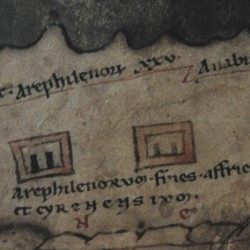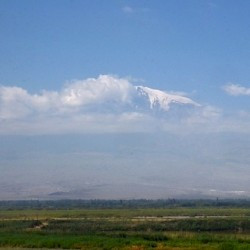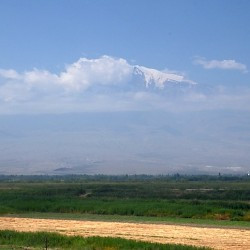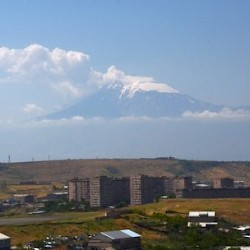Jona Lendering
Jona Lendering read history at Leiden University (MA 1993), specialized in Mediterranean culture at the Amsterdam Free University (MA 1996), and worked at excavations in Holland (Riethoven) and Greece (Halos). After teaching historical theory and ancient history at the Free University for several years, he was one of the founders of a school for history teaching, Livius Onderwijs. Born in Amsterdam, it has now spread to auxiliary locations in Bussum, Dronten, Gouda, Haarlem, Hoorn, Schagen, Zaanstad, and Zoetermeer. As of 2013, Livius Onderwijs has eight teachers, about 500-600 students a year, and offers tours to countries like Italy, Turkey, Iran, and Lebanon. The field trips help to etch into the students' minds some of what they've learned at the school.
Because history is for a large part telling a story, something you do best in your own language, Lendering prefers to publish in Dutch journals. However, he has contributed to the Bryn Mawr Classical Review and Ancient Warfare, while he is the founder of Ancient History Magazine. He is also the publisher and editor of the on-line publication of the Babylonian Chronicles of the Hellenistic Period, a set of important cuneiform sources for the history of the Seleucid and Parthian Near East, transcribed, translated and commented on by Bert van der Spek of the Free University Amsterdam and Irving Finkel of the British Museum. A publication as book is in preparation.
Lendering has written several books and maintains a blog in Dutch. He is the author of several books, including Edge of Empire and Consensus and Crises. For the Livius website, which has received several awards, he collaborates closely with Bill Thayer of LacusCurtius. Lendering is also the webmaster of two daily blogs, the MainzerBeobachter.com and Grondslagen.net.
There are 9380 items in Jona Lendering:
Arachosia
Arachosia (Old-Persian: Harauvatiš, "well watered"): satrapy of the Achaemenid empire (Kandahâr in modern Afghanistan) along the Tarnak river. The country is part of the road from the west of Iran across the mountains to the Indus valley. …Arae Philaenorum (Ras al-A'ali)
Arae Philaenorum: town on the border between the Carthaginian and Greek part of ancient Libya, modern Ras al-A'ali. The area of…

Arae Philaenorum on the Peutinger Map |
Arakha (Nebuchadnezzar IV)
Arakha: son of Haldita, an Armenian, living in Babylon. Arakha After the unsuccessful insurrection of Nidintu-Bêl against the new Persian king Darius…Aramaeans
Aramaeans: name of the Iron Age people living in what is now Syria. Their language, Aramaic, became the lingua franca of the ancient Near East. …Aramaic
Aramaic: name of several Semitic languages and dialects. Originally spoken in the Aramaean Iron Age kingdoms of Syria, it later became the language of the Achaemenid imperial administration, replaced several earlier languages, and remained the dominant language in the ancient…Aramava (Wadi Rum)
Aramava: Nabataean town and sanctuary on the edge of the Wadi Rum desert. The temple in the Wadi Rum Aramava, mentioned by…

Ararat from Artaxata |

Ararat from Artaxata |

Ararat from Erebuni |

Ararat from Yerevan |
Arausio (Orange)
Arausio: Roman city in central France, modern Orange. Arch of Orange Arausio, named after a native goddess, was probably the site of…